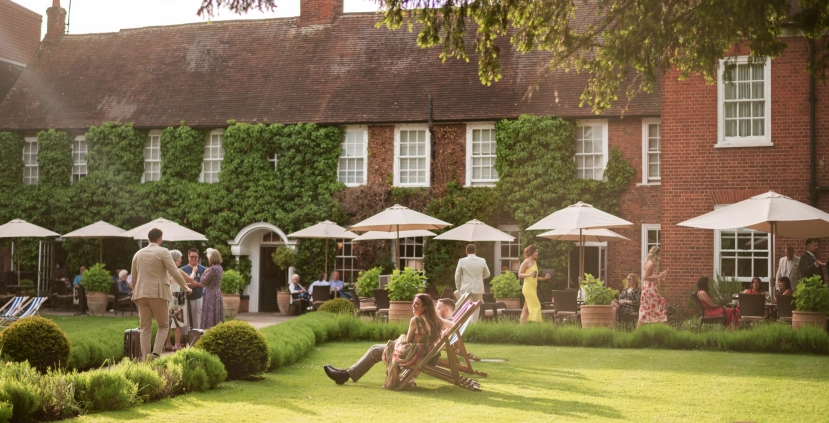
Sometimes, all we’re looking for is a shift in perspective—somewhere quieter than the life we’ve been living that week. Not the mountains, not the sea. No glowing metropolis or gilded spa. Just a change of pace. And Farnham, a market town about 45 minutes from London by train or car, provides exactly that—something gentler, more grounded.
It’s the kind of place people often pass by on their way to better-known names—Guildford, Saint Albans, maybe Windsor. Yet Farnham moves at a different pace. No spa town history, no major coastal landscapes, no curated identity. Just a lovely, laid-back town with real history and real charm.
This is a small town and the big fish in its small pond is The Bush Farnham, a 17th century inn located in the town’s center and the ideal respite to explore Farnham or perhaps not; to just relax and change your scenery for a few days.
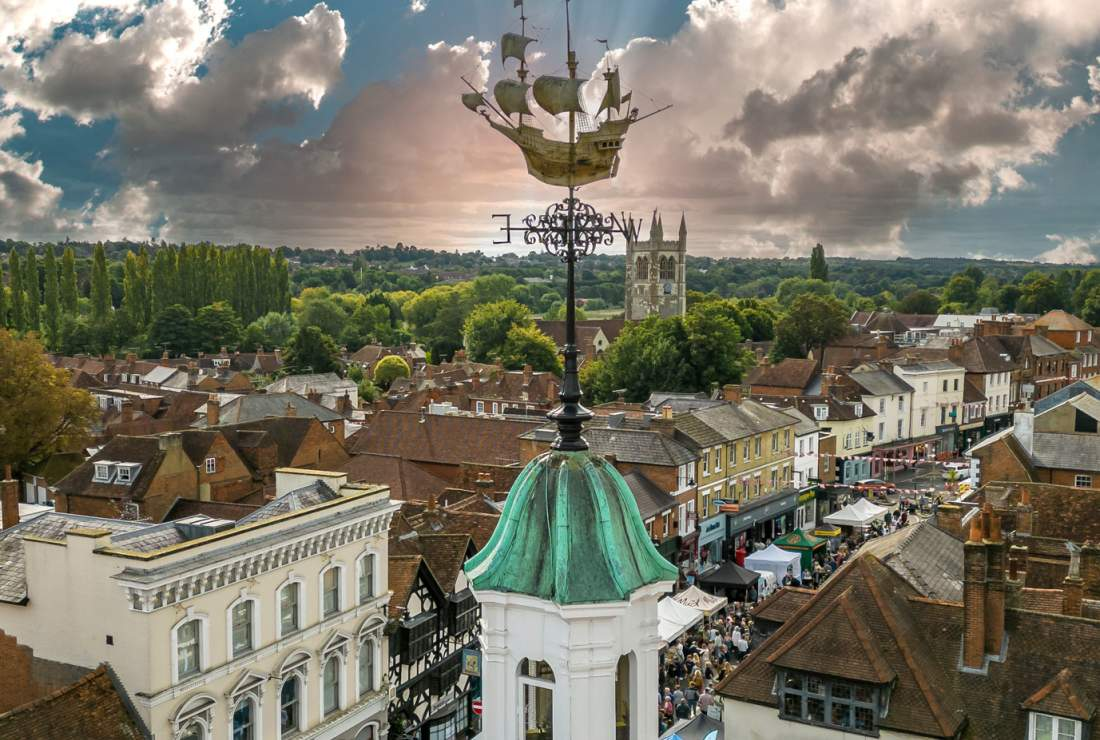
Farnham was once a town of merchants and traders. Those same buildings now house boutiques, homewares shops, bookstores, and cafés—but the rhythm hasn’t changed much. You can still walk into a butcher and have a proper conversation about the weekend roast. The deli sells local cheeses. There’s a farmers’ market on the first Sunday of each month with produce from the surrounding counties.
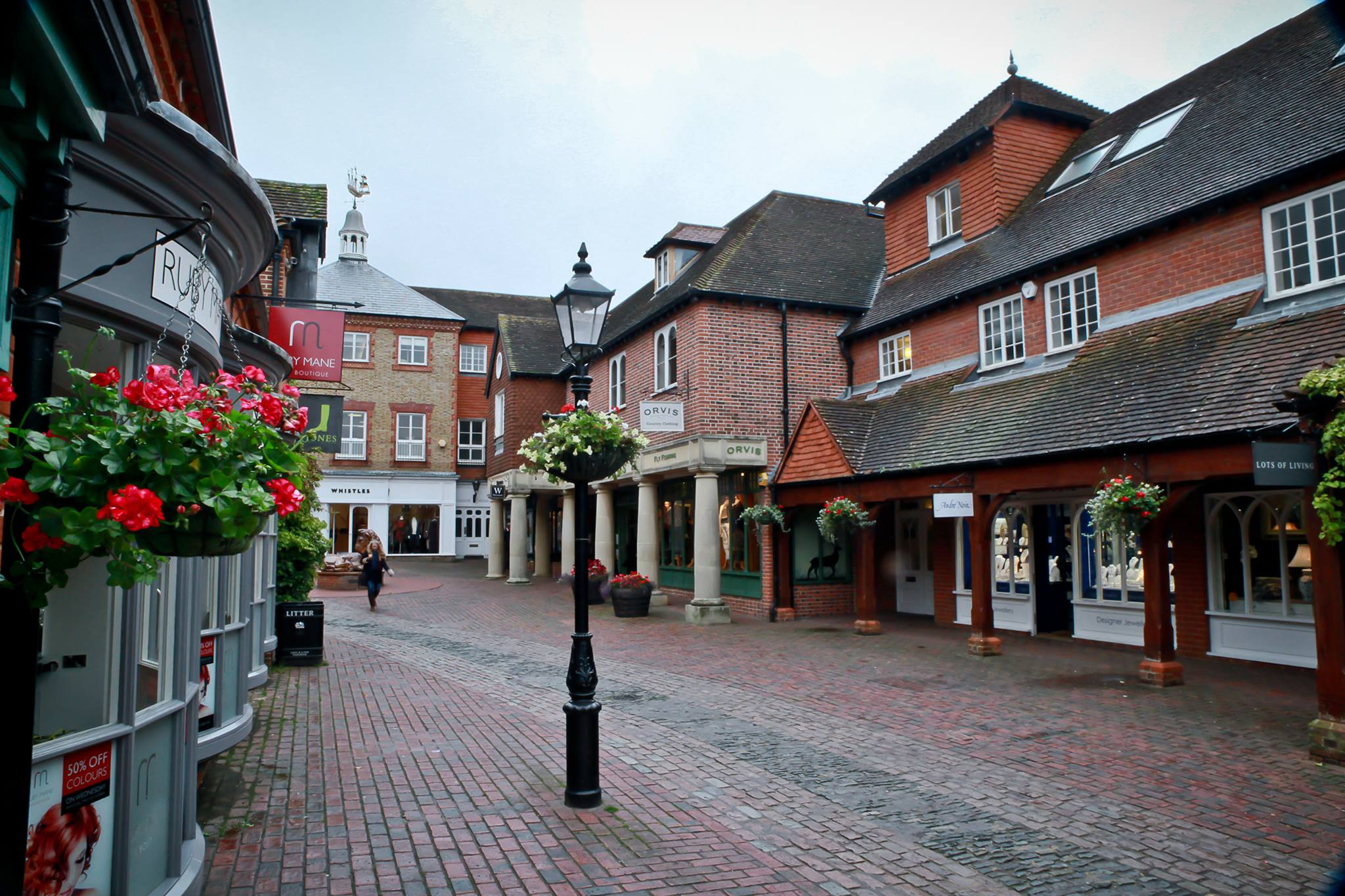
The Lion and Lamb Yard is the beating heart of all this. Hidden just off the high street, it opens into a cobbled courtyard framed by 18th-century façades. Cafés set out iron tables and serve wine and pastries to locals and visitors alike. There are independent retailers—books, clothes, ceramics, flowers—lining the yard. Unlike most modern shopping areas, this feels personal. Every shop is distinct. You’ll definitely love this much more than any mega mall you’ve visited in the past.
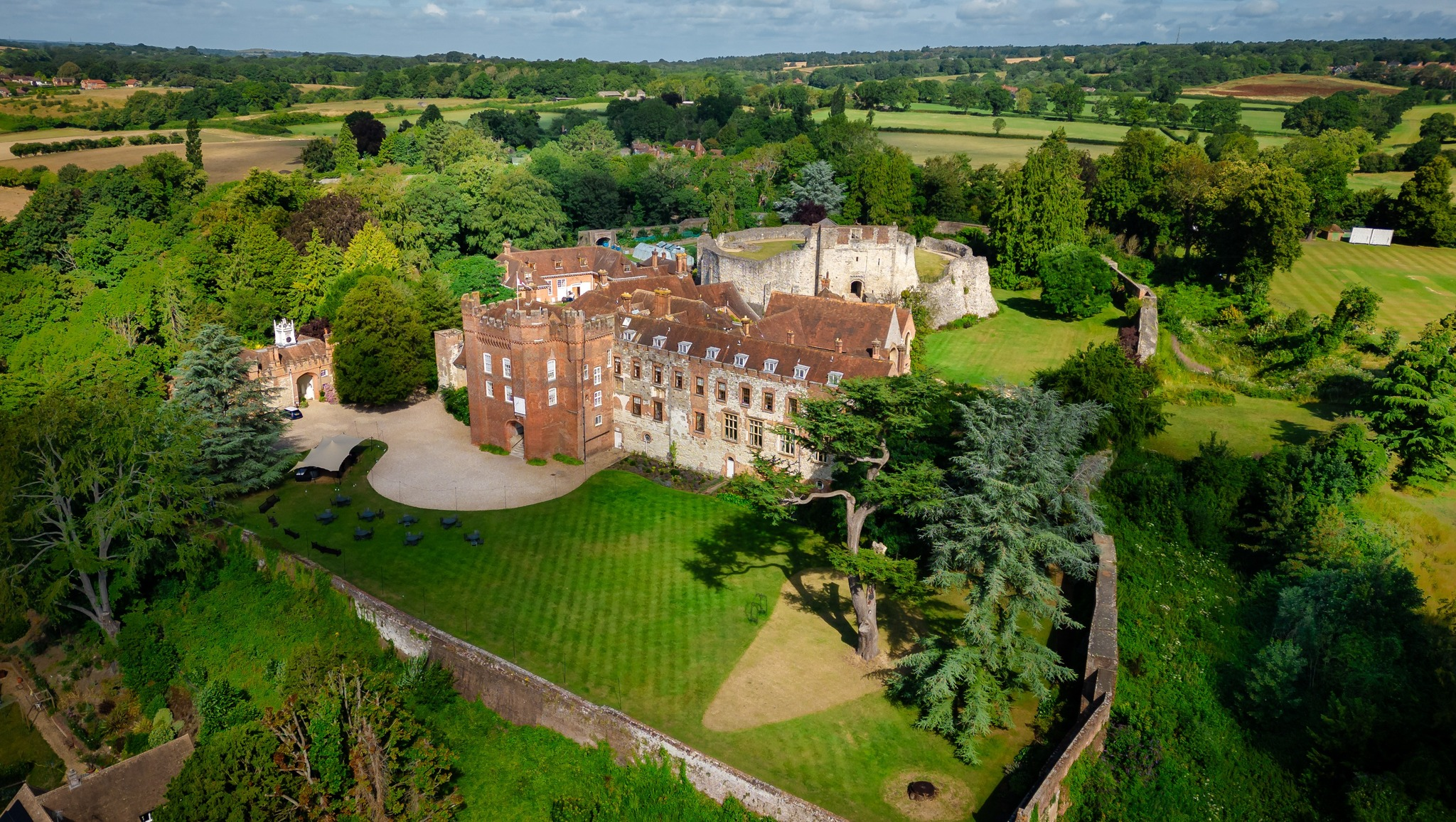
On the hill overlooking town is Farnham Castle. It was once home to the Bishops of Winchester, and you can still see the rooms, the chapel, and the outer walls—many from the original medieval structure. It hasn’t been turned into a spectacle. It remains slightly weathered, open to the public, with uninterrupted views across the town and countryside.
A small stream runs through the town itself, with paths that trace the water into meadows and Gothic churchyards. It’s the sort of place where you don’t need an agenda. Just step outside, pick a direction, and walk. Surprises come quickly here: a pub at the end of an alleyway, a forgotten plaque on a timber building, a path that leads into woodland just past the last shop.
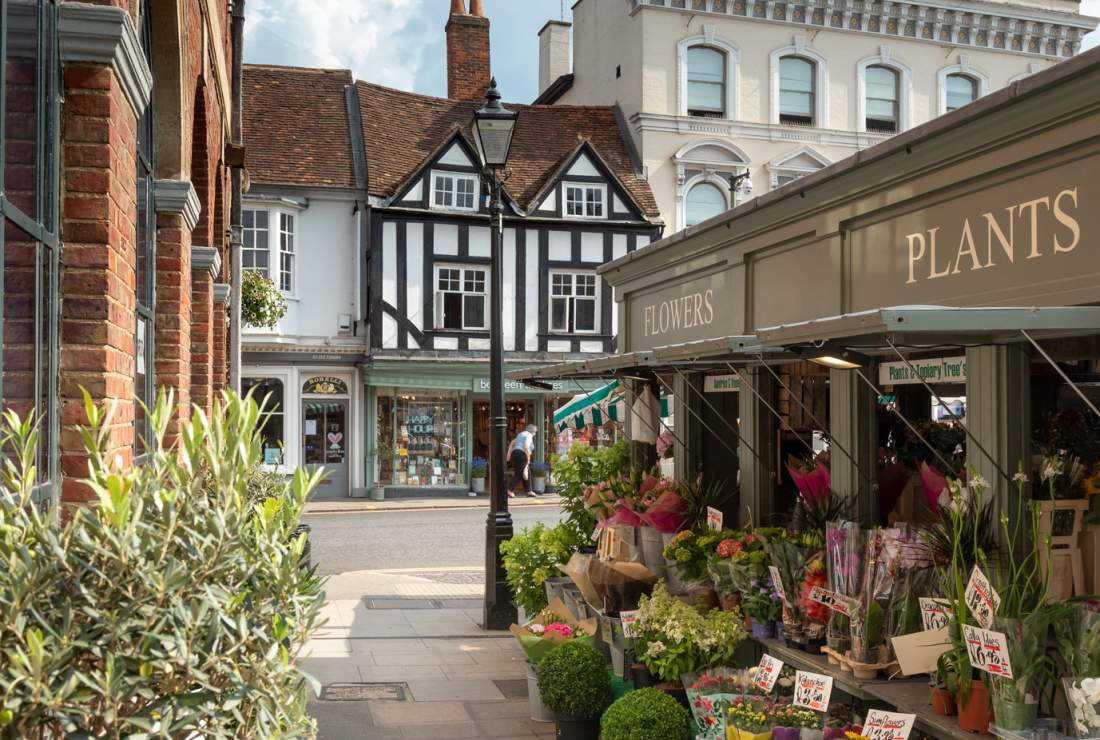
Unlike towns that trade on polished heritage, Farnham feels quietly self-possessed. Its identity hasn’t been fabricated for visitors—it’s simply remained intact. The town is deeply tied to its surroundings, framed by commons, heaths, and ancient woodland. The nearby Surrey Hills, a designated Area of Outstanding Natural Beauty, offer endless walking routes. Frensham Ponds and Bourne Woods are both within reach, offering swims in summer and cinematic stillness in winter.
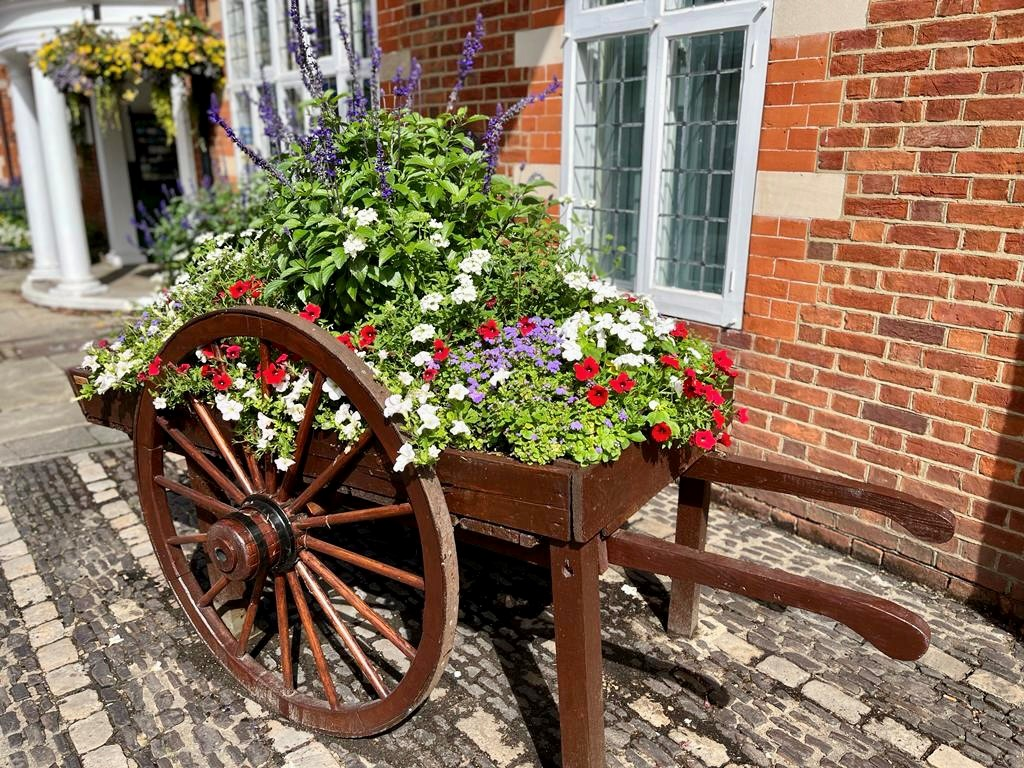
Farnham’s floral display programme is a quiet marvel—flower baskets suspended from lampposts, garden beds blooming along the pavements, public squares turned into bursts of colour. It’s a year-round effort that lends the town a kind of poetic continuity. The locals notice, and so do the visitors. It isn’t decorative. It’s deeply tended.
Back at The Bush, the location couldn’t be more central—though once inside, the mood is entirely removed. From the outside, it dominates a full block of the high street. But pass through the front entrance and continue out back, and it all fades.
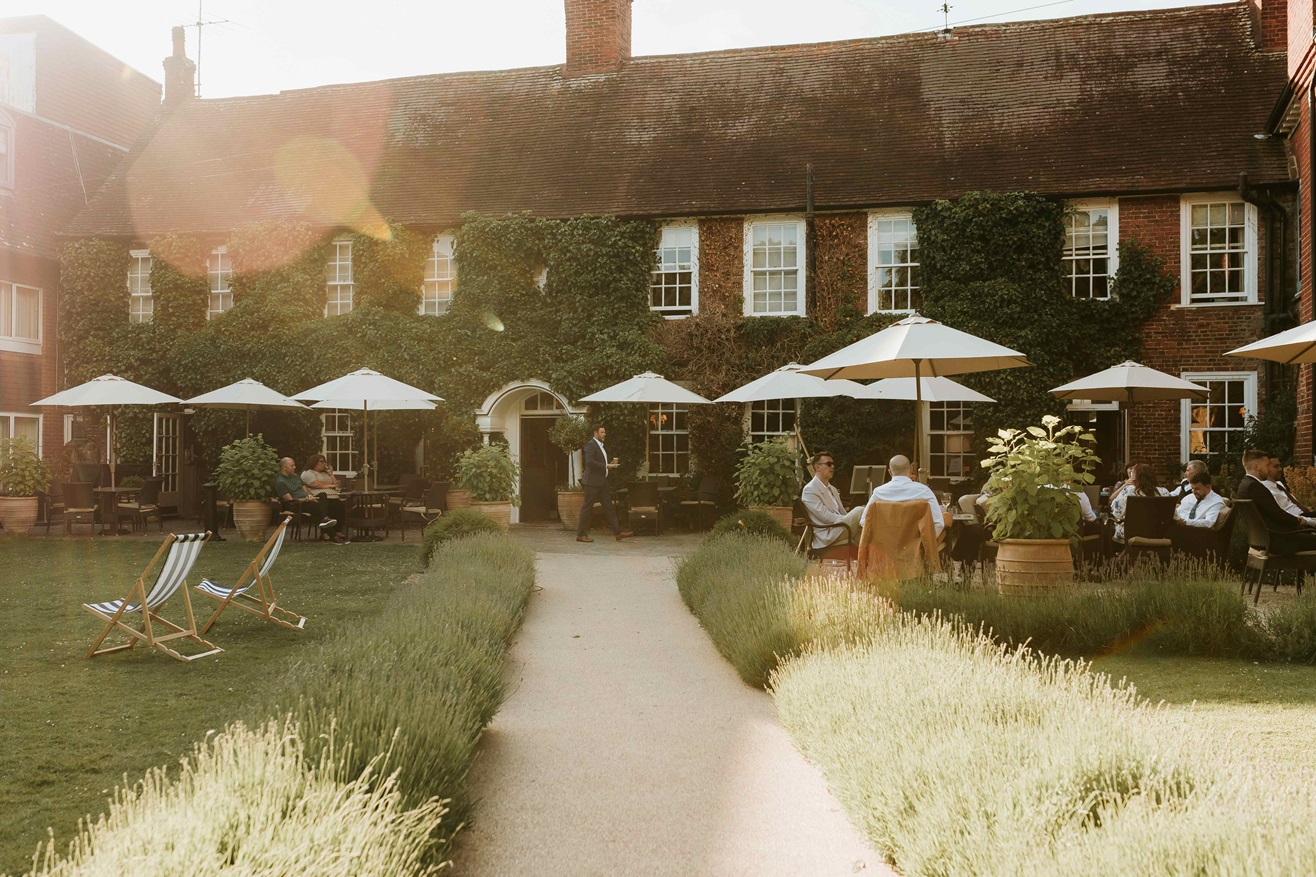
At its centre stands The Bush: a 17th-century coaching inn that has quietly watched the centuries pass, evolving without ever losing itself. From the rear entrance, it resembles a country estate more than a town hotel. Ivy spills across its Georgian brickwork, the garden flanked by manicured hedges and quiet gravel paths. The rear garden is generous, with pines, roses, benches, and loungers. A few guests are reading on benches, others linger over lunch at tables under parasols, children stretching their legs across the lawn. The high street hums just beyond the building’s other side, but here you’d never know it. The noise of traffic is gone, replaced by birdsong and breeze. It’s a rare architectural trick: the sense of remove without the inconvenience of remoteness.
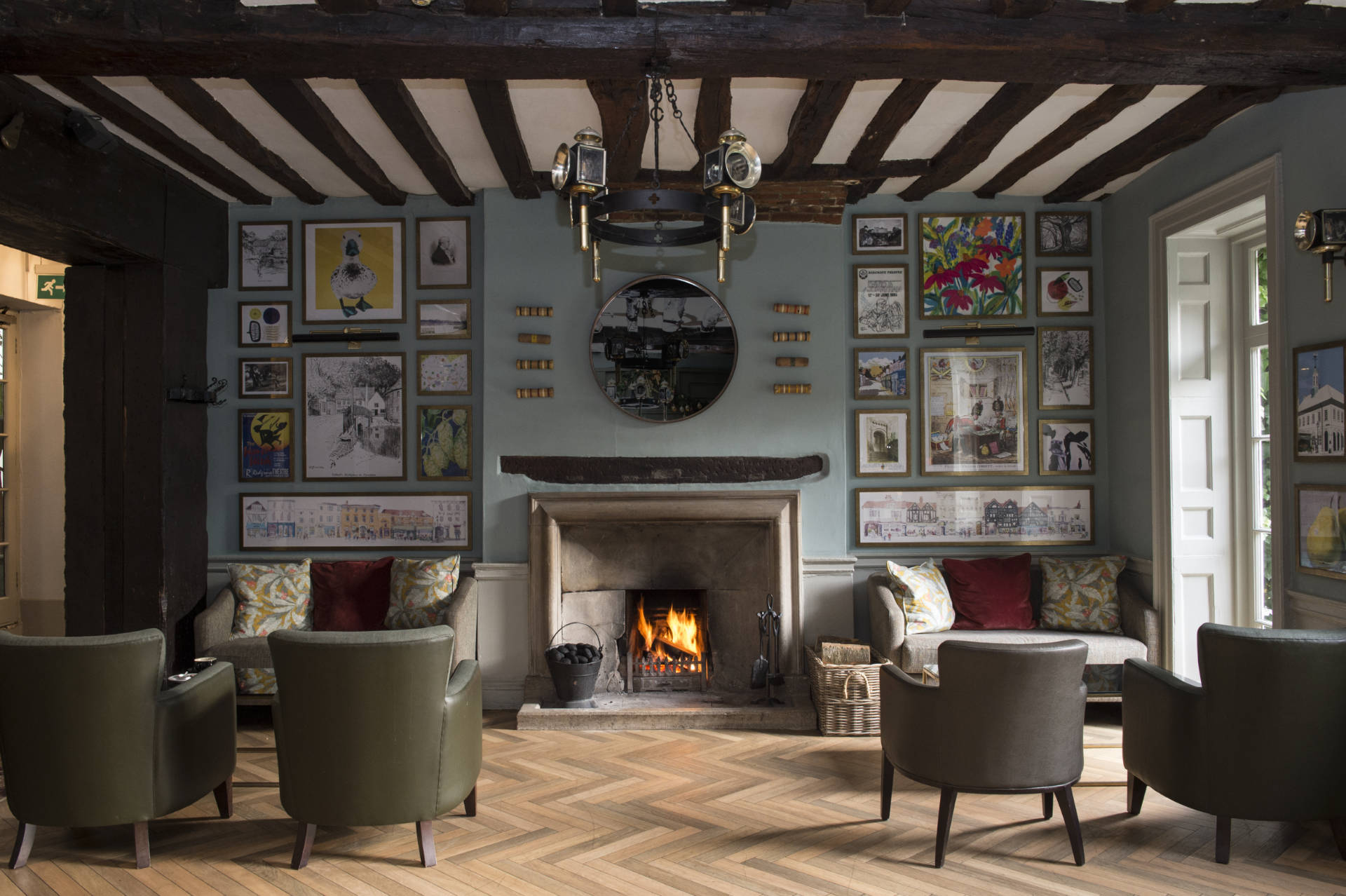
Inside, the feeling continues. Step through the doors and you’ll find nooks and staircases, antique sideboards, original fireplaces, and timber beams that feel unchanged for generations. In the dining areas, painted wall murals from centuries ago are still visible—religious scenes, floral motifs, portraits—painted directly onto the plaster, now faded with time but carefully preserved. The Bush has been welcoming guests since 1618. It is family-owned, independent, and deeply proud of that identity.
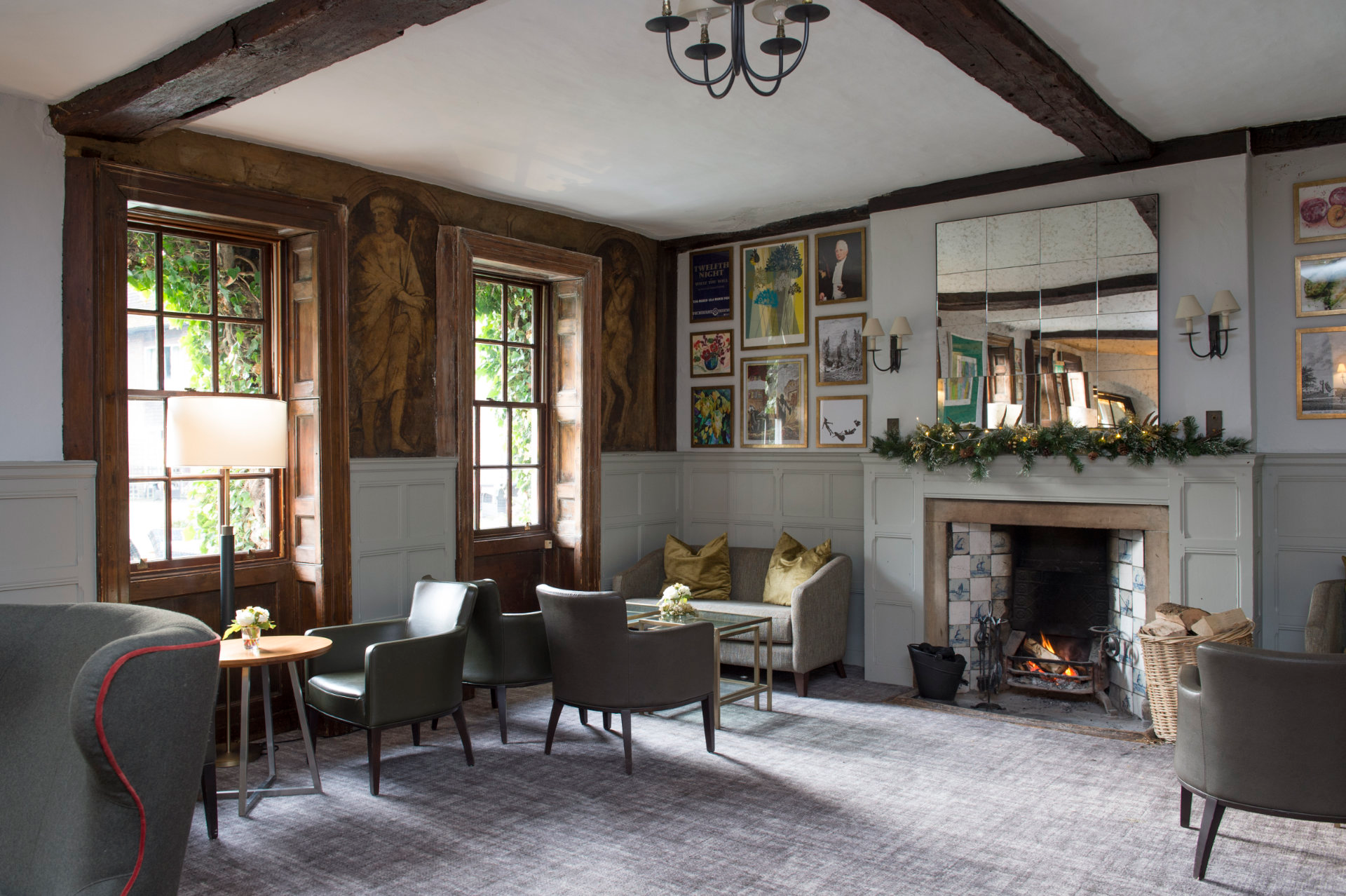
And while its bones are historic, the hotel never leans into tired tradition. There’s a fresh energy to the place—a sense that things are being thoughtfully looked after, not kept in amber. Rooms are modern and comfortable, with all the small luxuries you’d expect, but still grounded in the building’s character. You can feel the centuries, but you don’t feel stuck in them.
The hotel is independently owned as well and that independence matters. You feel it in the way the staff engage. In the way the lounges aren’t over-designed. In the way no one rushes you through anything. It is both old-world and current—thoughtful but unpretentious.
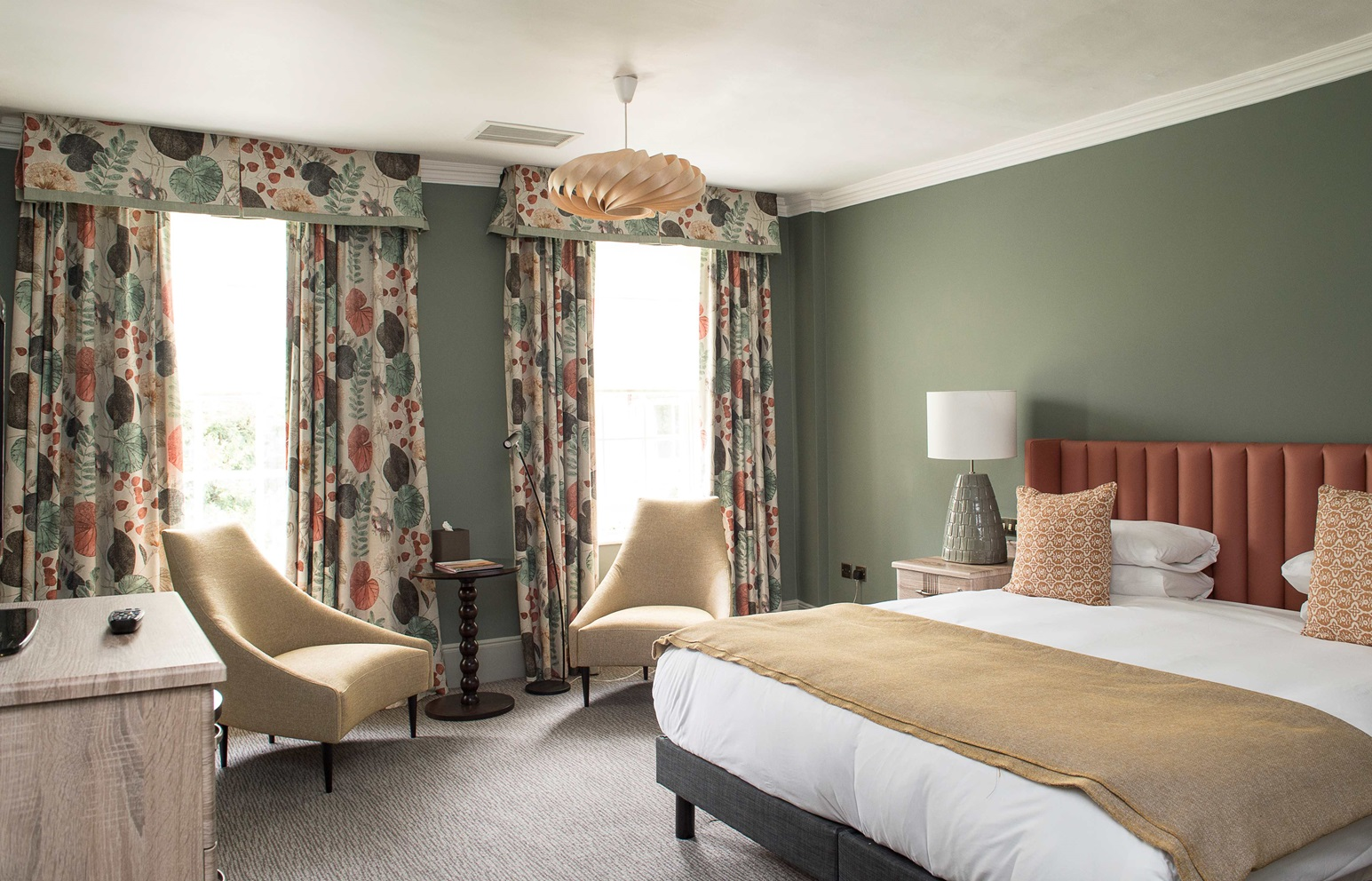
There are 95 rooms, each with its own layout and proportions, dictated by the age of the building rather than any standard plan. They’re smart, well-insulated, and comfortable, but you’re never in doubt you’re staying somewhere old.
The Bush Suite occupies the oldest and most characterful wing of the hotel, dating back to around 1682—offering residence-like privacy in a building deeply rooted in history. Bathed in natural light from three large windows that overlook the gardens and terrace, it feels simultaneously expansive and intimately tied to the hotel’s grounds.
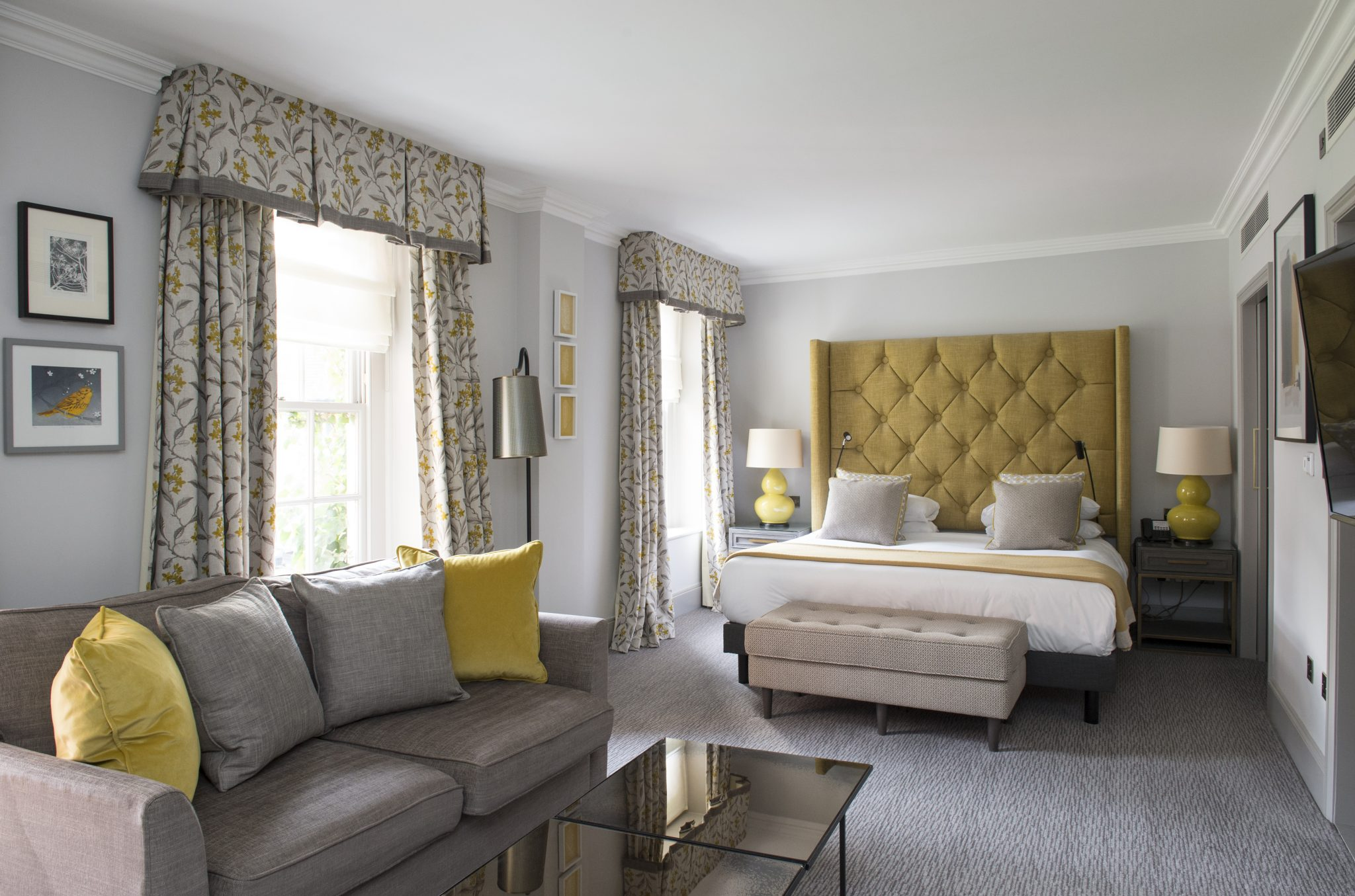
The palette is balanced: painted headboards in mustard paired with soft grey walls, cream accents, and a muted indigo sofa creating an elegant yet unforced atmosphere. The sitting area features a deep grey sofa and chaise lounge, alongside a discreet writing desk equipped with a Nespresso machine and mini fridge, allowing the suite to function as both a restful haven and a workspace.
The bed is a super-king with a padded mustard-coloured headboard, layered in goose-down pillows and a lightweight duvet, offering unshowy luxury. The bathroom is generous and split between a scenic roll-top bath and a walk-in rainfall shower. Spa-quality toiletries, cotton waffle robes, slippers, and thick towels complete the experience. Nearby is a walk-in dressing wardrobe with hanging space and a hospitality tray stocked with fresh water and tea/coffee essentials. The Bush Suite manages a rare duality—historical and modern, warm and spacious, a place to spread out and feel completely at home.
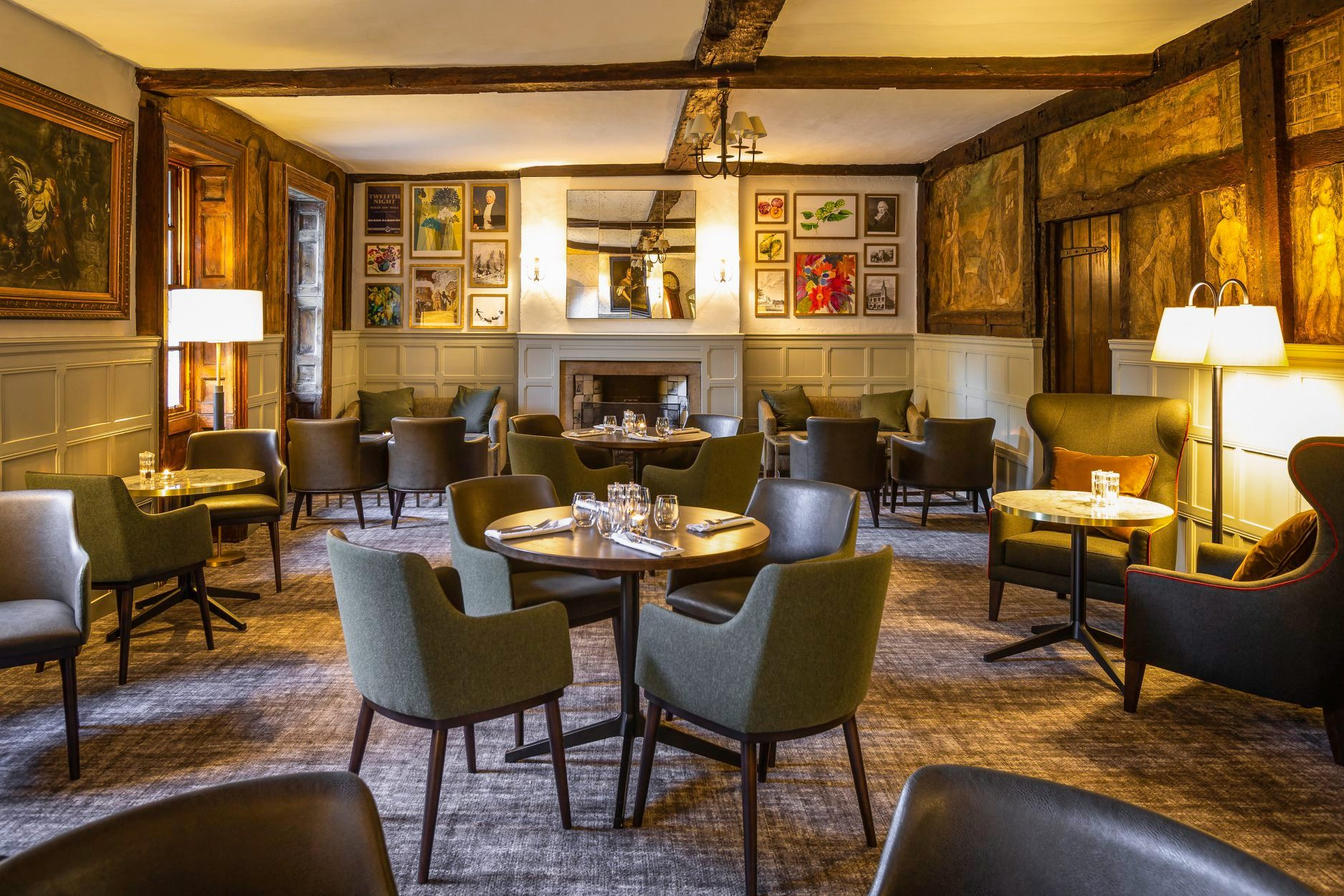
Dinner here feels anchored. The steaks are the standout—generously portioned, perfectly seared, served with bone marrow jus and triple-cooked chips. There’s no gimmick, no reinvention. Just confident cooking. The Oak Lounge, where meals are served, is rich in texture: polished wood, plastered walls with centuries of patina, dim light in the evenings, and windows that overlook the garden.
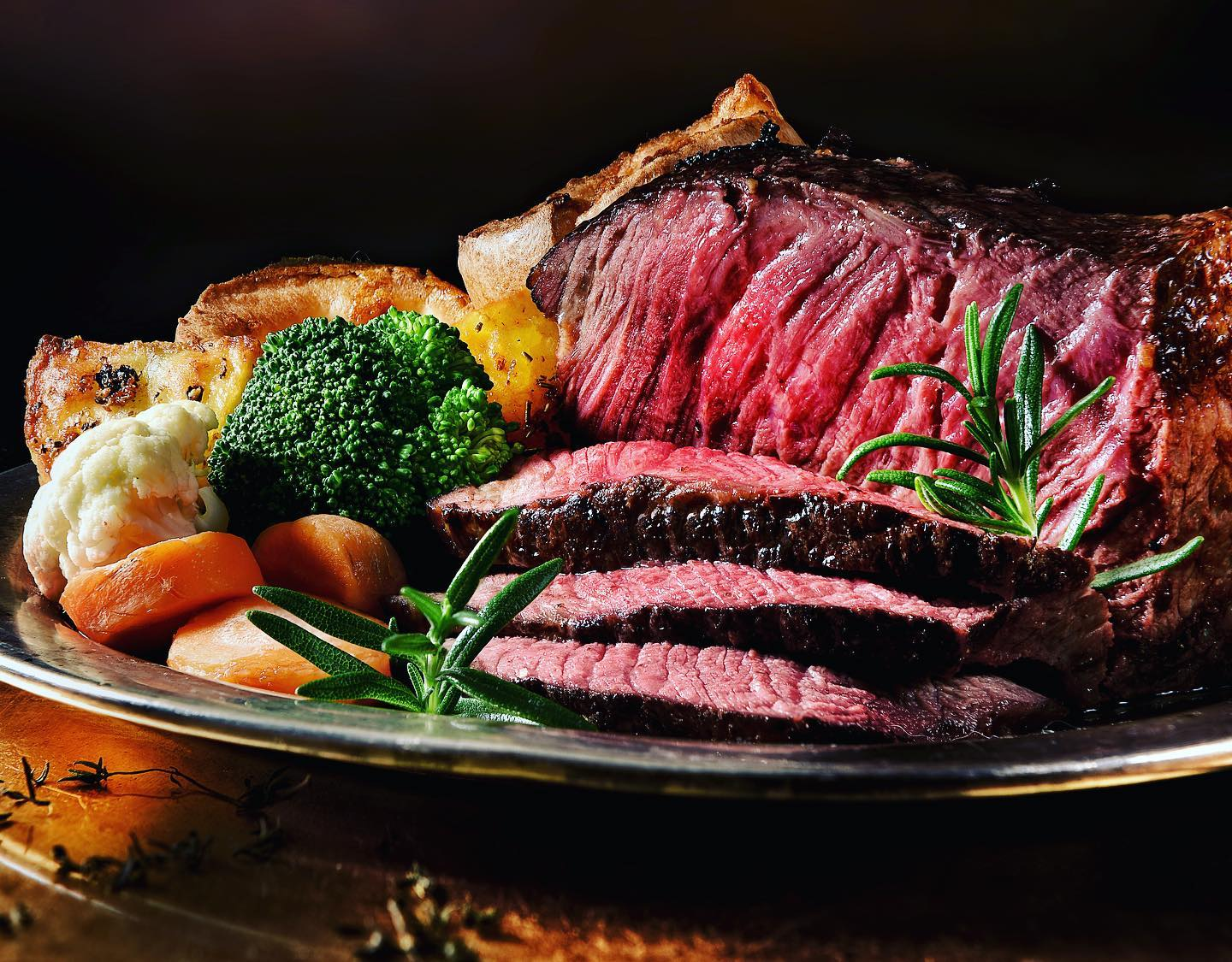
The Garden Restaurant is also open for breakfast—served à la carte on weekdays, with poached eggs, fresh fruit, and properly crisp bacon—and for afternoon tea or private dining later in the day. Guests trickle in unhurriedly, many staying to read or take meetings in the lounge after their meals. This is not a rush-through hotel dining room. It’s a place to remain.
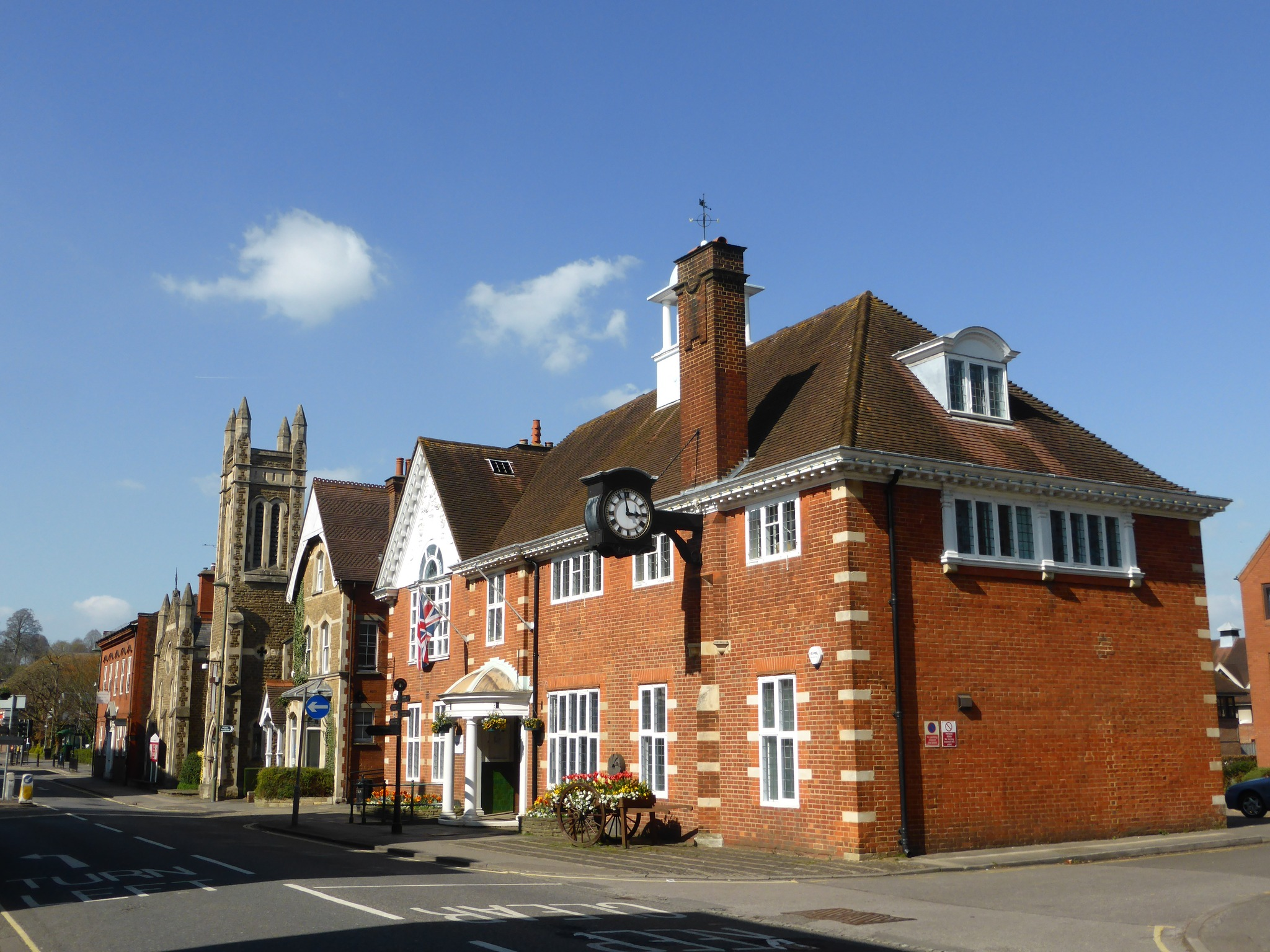
There’s enough in Farnham to fill a weekend. Or not. That’s part of its appeal. You can explore the town, walk to the castle, or trail your hand along the sun-warmed walls of Lion and Lamb Yard. Or you can do nothing—wake late, order breakfast, sit in the courtyard with a book, walk only as far as the church and back.
The beauty of Farnham, and of The Bush, is that neither asks you to be anywhere but exactly where you are. No demands. No spectacle. Just somewhere else—for a while.
And in a world of overstimulation, curated escapes, and rural posturing, that may be the rarest luxury of all.

